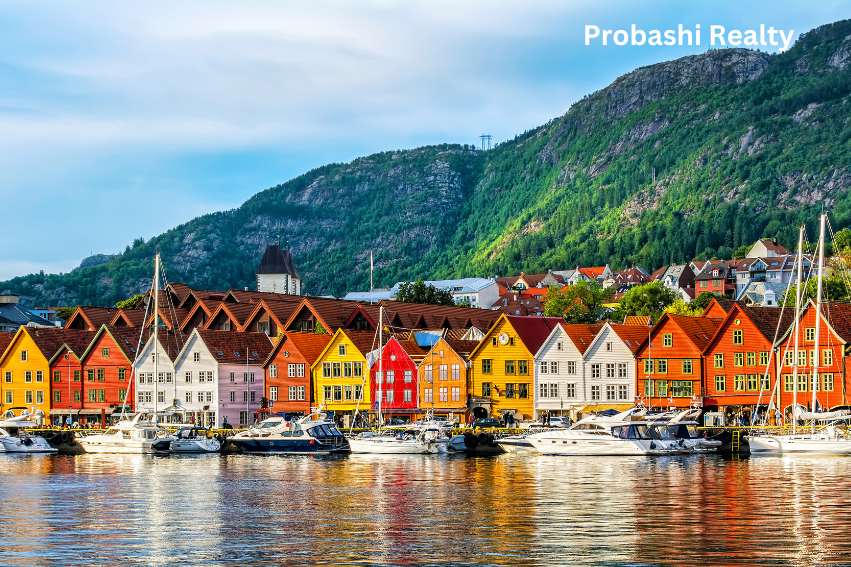In Norway, mortgages, known as “boliglån,” are essential for financing property purchases, playing a central role in the country’s real estate market. Norwegian mortgage options cater to diverse borrower preferences, offering fixed-rate mortgages, variable-rate mortgages, interest-only mortgages, and combination mortgages. Fixed-rate mortgages provide stability with a consistent interest rate throughout the loan term, while variable-rate mortgages offer flexibility with rates tied to market conditions. Interest-only mortgages allow borrowers to pay only the interest for a specified period, while combination mortgages provide a mix of fixed and variable rates. The mortgage process in Norway involves several steps, including pre-approval, property valuation, documentation submission, loan application, underwriting, offer acceptance, signing the mortgage contract, property registration, loan disbursement, and repayment. Throughout this process, borrowers should stay informed about mortgage regulations, compare rates and terms from different lenders, and carefully review loan documents before committing to a mortgage.
Norway mortgage type and process:
In Norway, mortgages, commonly referred to as “boliglån,” are fundamental in financing property purchases. The Norwegian mortgage market offers various loan types tailored to meet diverse borrower needs. Common mortgage types include:
-
Fixed-Rate Mortgages (Fastrente): Fixed-rate mortgages provide borrowers with stability by offering a consistent interest rate throughout the loan term, typically ranging from one to thirty years. This allows borrowers to predict monthly payments accurately, regardless of fluctuations in market interest rates.
-
Variable-Rate Mortgages (Flytende Rente): Variable-rate mortgages, also known as adjustable-rate mortgages (ARMs), have interest rates that can fluctuate based on market conditions. The interest rate is typically tied to a benchmark rate, such as the Norwegian interbank offered rate (NIBOR), with adjustments made periodically.
-
Interest-Only Mortgages (Avdragsfri Lån): Interest-only mortgages allow borrowers to pay only the interest portion of the loan for a specified period, typically up to ten years. During this time, borrowers are not required to make payments toward the loan principal, resulting in lower initial monthly payments.
-
Combination Mortgages (Kombinasjonslån): Combination mortgages offer a mix of fixed and variable interest rates. Borrowers can choose to fix the rate for a certain period, followed by a variable rate. This provides some stability while also allowing borrowers to potentially benefit from lower rates in the future.
The mortgage process in Norway typically involves several steps:
-
Pre-Approval (Forhåndsgodkjenning): Borrowers start by obtaining pre-approval from a lender, providing information about their financial situation and the property they intend to purchase.
-
Property Valuation (Verdivurdering av Eiendommen): Lenders conduct a valuation of the property to assess its market value and determine the loan-to-value ratio (LTV), which influences the loan amount they’re willing to offer.
-
Documentation (Dokumentasjon): Borrowers compile and submit required documentation, including proof of income, employment history, identification documents, bank statements, and property details.
-
Loan Application (Lånesøknad): Borrowers complete the mortgage application, providing details about the desired loan amount, repayment term, and preferred interest rate type.
-
Underwriting (Kredittvurdering): Lenders review the loan application and documentation, assessing the borrower’s creditworthiness, financial stability, and property value to determine loan approval.
-
Offer and Acceptance (Tilbud og Aksept): If approved, the lender issues a mortgage offer outlining the loan terms, including the interest rate, repayment schedule, fees, and conditions. The borrower reviews and accepts the offer.
-
Signing the Mortgage Contract (Underskrift av Låneavtalen): Borrowers sign the mortgage contract, agreeing to the terms and conditions specified by the lender.
-
Property Registration (Eiendomsregistrering): The property ownership registration process takes place, transferring ownership to the borrower and registering the mortgage with the relevant authorities.
-
Disbursement and Repayment (Utbetaling og Nedbetaling): Once the property registration is complete, the lender disburses the loan funds to the seller or relevant parties, completing the property purchase transaction. Borrowers make regular mortgage payments according to the agreed-upon schedule, including principal and interest, until the loan is fully repaid.
Throughout the mortgage process, borrowers should stay informed about mortgage regulations, compare rates and terms from different lenders, and carefully review loan documents before committing to a mortgage. Consulting with a mortgage advisor or real estate professional can also provide guidance and support throughout the process.
Norway Mortgage Tips:


